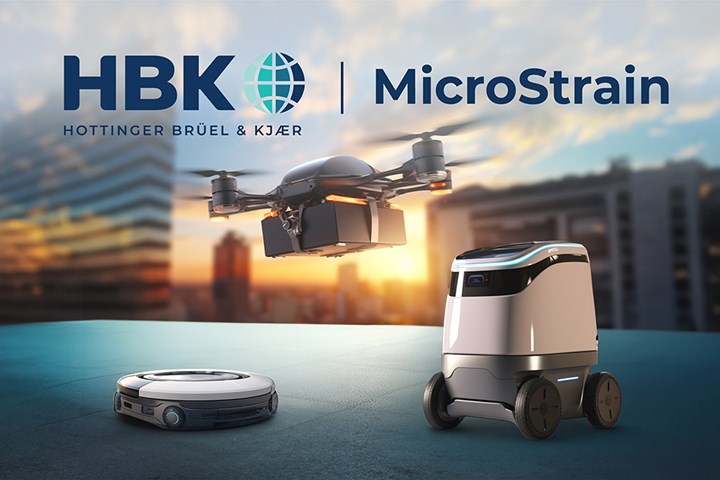HBK enhances sensor offerings with MicroStrain acquisition
MicroStrain designs and manufactures high-precision inertial and wireless sensing systems that cater to industries such as automation, mobility and unmanned vehicles.
Share
Hottinger Brüel & Kjær (HBK, Hovedstaden, Denmark), providing industry with highly accurate technologies and expertise in testing and measurement, welcomes MicroStrain Sensing Systems (Milliston, Vt., U.S.) to the family following the successful completion of the acquisition by Spectris plc (London, U.K.). This acquisition, valued at $37.6 million, has now been approved through a comprehensive regulatory process in the U.S.
Spectris announced its intention to acquire MicroStrain from Parker Hannifin Corp. (Cleveland, Ohio, U.S.) back in June. With the integration into HBK, MicroStrain will operate under the name “MicroStrain by HBK.” The fusion of expertise will empower HBK with additional technological know-how to provide enhanced solutions for the automation and smart manufacturing markets.
MicroStrain is widely recognized for its expertise in designing and manufacturing high-precision inertial and wireless sensing systems. Its products cater to the industrial and tactical-grade sector within the inertial sensing systems market. The recent increase in demand from industrial automation, as well as emerging fields like robotics, logistics, automation, unmanned vehicles and mobility applications, has contributed significantly to MicroStrain’s growth.
For instance, MicroStrain sensors have been used to capture critical key measurements, accurately, in a range of environments to ensure successful missions for Beta Technologies’ (South Burlington, Vt., U.S.) composite prototype electric vertical takeoff and landing (eVTOL) aircraft, which is designed to deliver human organs for critical transplant operations. MicroStrain’s sensors enabled the company to monitor several conditions including temperature, vibration and strain.
“This move [acquiring MicroStrain] strengthens our North American presence, enhances our customer offering and expands our presence in robotics and agriculture,” Ben Bryson, president of HBK, says. “We are excited to leverage these technologies to accelerate our smart sensor capabilities and drive innovation for our customers.”
HBK bridges the physical and virtual worlds with robust, flexible hardware and precise, powerful analytics software. It seeks to give design, test and measurement engineers complete confidence in every reading and every data-driven decision. Backed by decades of experience and deep expertise, HBK’s sensors and software can be used in a variety of applications, from building more aerodynamic aircraft to testing the safety of automotive vehicles, and monitoring assets throughout their production cycle.
For additional information on sensors, visit CW’s Sensors microsite.
Related Content
-
U.K. academics head up flat fiber sensor research for composites
Six universities are in charge of developing flat fiber sensors, which will then be applied with industry partners, to determine their impact in monitoring composites manufacturing and more.
-
TPI, University of Texas participate in wind blade cure optimization project
Physics-informed machine learning algorithms will be applied to simulate and optimize composite wind blade curing in an effort to advance smart composites manufacturing in industry.
-
The evolution, transformation of DEA from lab measurements to industrial optimization
Over the years, dielectric analysis (DEA) has evolved from a lab measurement technique to a technology that improves efficiency and quality in composites production on the shop floor.




